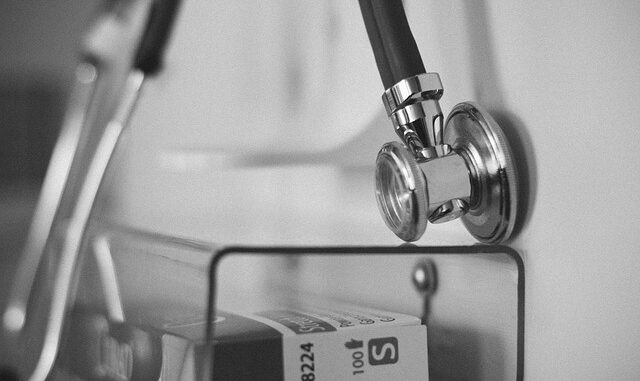
Summary
This article provides a comprehensive guide for UK hospitals to enhance medical device security, focusing on actionable steps for improved data and infrastructure protection. It covers risk assessment, network segmentation, device management, incident response planning, and collaboration with manufacturers. By following these best practices, hospitals can strengthen their defenses against cyber threats and ensure patient safety.
Safeguard patient information with TrueNASs self-healing data technology.
** Main Story**
In today’s interconnected healthcare world, you absolutely must prioritize protecting patient data and making sure those vital medical devices operate smoothly. UK hospitals are increasingly targeted by cyberattacks, which, let’s face it, makes rock-solid security measures non-negotiable. So, how do we do it? Let’s walk through some actionable steps that can make a real difference, shall we?
1. Nail Down Those Risk Assessments
First off, you’ve gotta figure out where your weaknesses are. Start by identifying potential vulnerabilities and threats to your medical devices and your network. I mean, what devices are you using? How are they connected? What’s the worst that could happen if someone got in? Think about cyber threats like malware and ransomware, sure, but don’t forget physical threats like theft or someone messing with the equipment. A good risk assessment helps you focus your efforts and spend resources where they matter most.
2. Segment Your Network Like a Pro
Network segmentation is your friend. Think of it like dividing your house into separate apartments. It means splitting your network into smaller, isolated zones. This limits the damage if there’s a security breach. Keep your medical devices away from other hospital systems. That way, you can stop malware from spreading and prevent unauthorized access. Even if one section gets hit, the others stay safe. Trust me; you’ll sleep better at night knowing this is in place.
3. Get Serious About Device Management
Device management is a big deal. Implement strong access controls; I’m talking multi-factor authentication and role-based access. This makes sure only authorized personnel can get to the devices. You should also create a reliable patch management process. Keep those software updates and security patches coming to fix any known vulnerabilities. Regular reviews of device configurations are important to reinforce best practices and lower risks.
4. Have a Rock-Solid Incident Response Plan
Stuff happens. You need to be ready for security incidents by having a killer incident response plan. This plan should clearly lay out how to spot, contain, and recover from a breach. Include clear ways to communicate, designated roles, and steps to save evidence. Test and update your plan regularly to make sure it actually works. Remember that tabletop exercises can be super useful to work through the plan with all of the stakeholders involved.
5. Work With Manufacturers, Not Against Them
Talk to your medical device manufacturers. They know their stuff and can keep you up-to-date on potential vulnerabilities and security updates. Create easy ways to communicate so you get notified quickly about patches and advisories. If you can, collaborate on testing and fixing vulnerabilities. I mean, manufacturers have the latest information to protect your devices.
6. Train Your Staff; It’s Worth It
Don’t skip security training for your staff. Educate them on cybersecurity best practices and why medical device security is so important. Regular training sessions will raise awareness about threats like phishing attacks and malware. It’s good to empower your staff to spot and report suspicious activity right away. A well-trained team is your first line of defense, and it’s one of the most cost-effective investments you can make.
7. Embrace Advanced Security Tech
Think about using advanced security technologies to beef up your defenses. Intrusion Detection and Prevention Systems (IDPS) keep an eye on network traffic for anything fishy and block potential threats. Security Information and Event Management (SIEM) systems gather and analyze security logs to find patterns that could mean a breach. These tools give you insights into your security and help you respond to threats in real-time.
8. Don’t Forget Legacy Devices
Alright, here’s a tough one: older medical devices. They can be a real pain due to outdated software and limited patching. Find those old devices on your network and see what risks they bring. Implement compensating controls, like network segmentation and access restrictions, to lower these risks. When possible, try to replace those devices with newer, more secure options. It’s a budget conversation, I know, but it’s a necessary one.
So, by putting these steps into action, UK hospitals can significantly boost their medical device security, protect patient data, and keep healthcare services running smoothly. A proactive, comprehensive approach to security is crucial in today’s threat landscape. Now, I know this information is current as of today, but things change fast in cybersecurity, so stay alert and keep adapting. I had a friend who didn’t update his systems regularly, and, well, let’s just say it wasn’t pretty. Don’t be that guy. A little vigilance goes a long way.


So, network segmentation is like building digital walls, eh? Does that mean my smart fridge is finally getting its own “apartment,” far away from the hospital’s critical systems? Asking for my peace of mind… and my questionable midnight snack habits.
Haha, that’s a great way to put it! Yes, think of network segmentation as giving your smart fridge its own well-protected space. Maybe it can finally relax and stop worrying about accidentally accessing patient records during those late-night snack raids. What other devices deserve their own network ‘apartment’?
Editor: MedTechNews.Uk
Thank you to our Sponsor Esdebe
Regarding incident response planning, what specific metrics do UK hospitals typically use to measure the effectiveness of their tabletop exercises and plan updates, and how frequently should these metrics be reviewed to ensure continuous improvement?